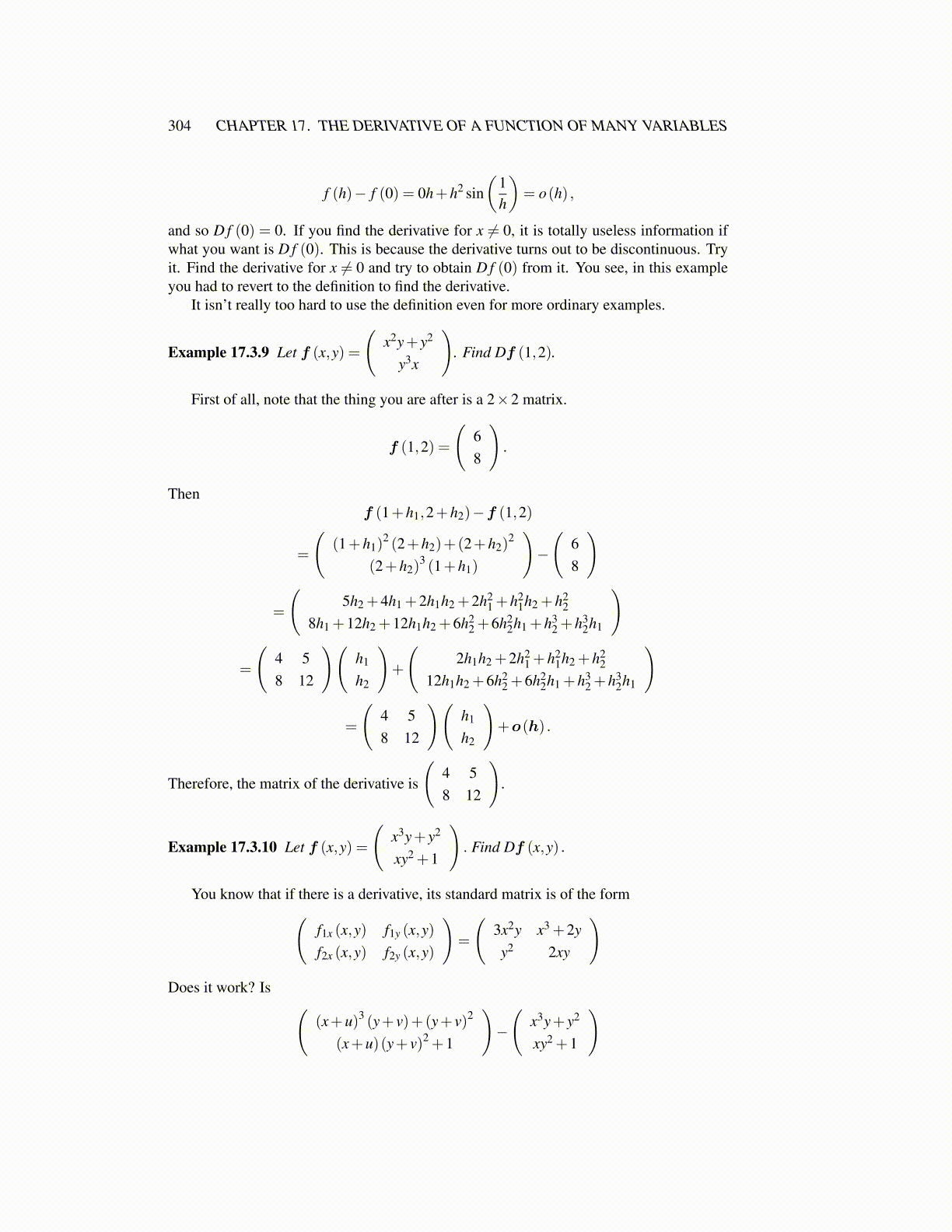
304 CHAPTER 17. THE DERIVATIVE OF A FUNCTION OF MANY VARIABLES
f (h)− f (0) = 0h+h2 sin(
1h
)= o(h) ,
and so D f (0) = 0. If you find the derivative for x ̸= 0, it is totally useless information ifwhat you want is D f (0). This is because the derivative turns out to be discontinuous. Tryit. Find the derivative for x ̸= 0 and try to obtain D f (0) from it. You see, in this exampleyou had to revert to the definition to find the derivative.
It isn’t really too hard to use the definition even for more ordinary examples.
Example 17.3.9 Let f (x,y) =
(x2y+ y2
y3x
). Find Df (1,2).
First of all, note that the thing you are after is a 2×2 matrix.
f (1,2) =
(68
).
Thenf (1+h1,2+h2)−f (1,2)
=
((1+h1)
2 (2+h2)+(2+h2)2
(2+h2)3 (1+h1)
)−
(68
)
=
(5h2 +4h1 +2h1h2 +2h2
1 +h21h2 +h2
2
8h1 +12h2 +12h1h2 +6h22 +6h2
2h1 +h32 +h3
2h1
)
=
(4 58 12
)(h1
h2
)+
(2h1h2 +2h2
1 +h21h2 +h2
2
12h1h2 +6h22 +6h2
2h1 +h32 +h3
2h1
)
=
(4 58 12
)(h1
h2
)+o(h) .
Therefore, the matrix of the derivative is
(4 58 12
).
Example 17.3.10 Let f (x,y) =
(x3y+ y2
xy2 +1
). Find Df (x,y) .
You know that if there is a derivative, its standard matrix is of the form(f1x (x,y) f1y (x,y)f2x (x,y) f2y (x,y)
)=
(3x2y x3 +2yy2 2xy
)
Does it work? Is ((x+u)3 (y+ v)+(y+ v)2
(x+u)(y+ v)2 +1
)−
(x3y+ y2
xy2 +1
)